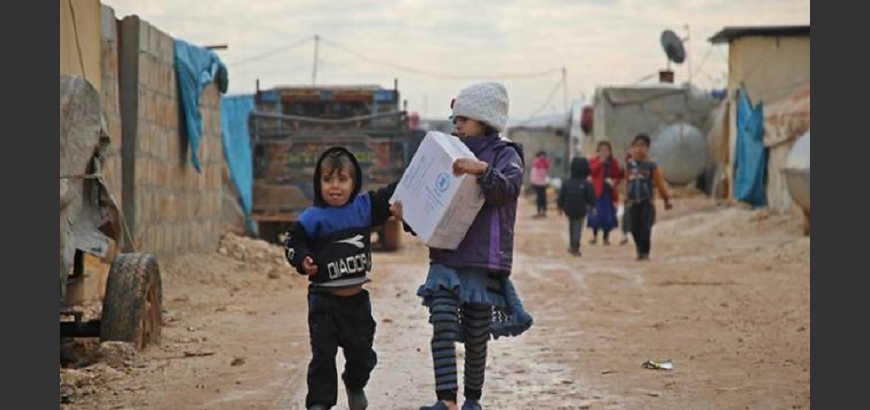The United Nations Office for the Coordination of Humanitarian Affairs (OCHA) said that more than 7,000 people living in the al-Rukban camp on the Syrian-Jordanian border have left for regime-controlled areas since March, as Assad’s forces impose a harsh blockade on the camp, which is home to about 40,000 people living in terrible humanitarian conditions. Various deaths have been recorded, especially among children, as a result of the lack of medicine and medical care.
An OCHA spokesman, David Swanson, said that more than 7,300 people had left the camp since March, adding that the camp, which is close to the al-Tanf base, still has about 36,000 people.
Camp residents who want to leave must organize themselves in batches for transport, heading up to the border of the safe zone in region 55, run by the International Coalition, where the camp is located.
After reaching the safe zone’s borders, they continue on their way in either private vehicles or vehicles provided by the regime, to four joint shelter centers in Homs.
Last Wednesday, Russia’s so-called “reconciliation center” in Syria announced that about 2,000 displaced Syrians had departed the al-Rukban camp on Apr. 23, 2019, through the humanitarian corridor at the Jalib crossing.
The operation to get this number of families out of the camp came a day after a meeting held by representatives of Russia with a number of camp figures to negotiate between the two sides.
The Syrian Observatory for Human rights said that the operation had recently been carried out in the context of reconciliations with regime forces. Other residents had refused to carry out settlements with the Assad regime or to go to areas under its control.
Last March, the al-Rukban camp’s administration issued a statement in which it accused Russia of blockading the camp, to force its residents to head to Assad-controlled areas. Moscow responded that it was American forces blockading the camp’s residents and preventing them from leaving. The central command for American forces in Syria denied the Russian allegations in a statement, saying that the United States was not restricting displaced people’s movements inside or outside the camp, and that it was in full support of an operation allowing displaced people to freely move without coercion and allowing those who want to leave al-Rukban to leave safely and voluntarily.
Since 2016, when Jordan closed borders with Syria declaring it a “military zone,” displaced people have refused to return to areas under regime control, out of fear of revenge and of arrest, as well as being conscripted into Assad’s forces.
This article was translated and edited by The Syrian Observer. Responsibility for the information and views set out in this article lies entirely with the author.


